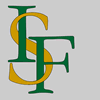Rhizocarpon geographicum subsp. kittilense (Räsänen) Ahti
Norrlinia, 17: 57, 2008. Basionym: Rhizocarpon kittilense Räsänen - Ann. Bot. Soc. Zool.-Bot. Fenn. Vanamo, 19: 58, 1942.
Synonyms: Rhizocarpon lindsayanum subsp. kittilense (Räsänen) Runemark; Rhizocarpon olivetorum Räsänen; Rhizocarpon riparium Räsänen
Distribution: N - Piem, VA, Emil (Fariselli & al. 2020).
Description: Thallus crustose, episubstratic, greyish-green to yellow-green, areolate, forming 5-10 cm patches delimited by a black prothallus, the areoles contiguous, round to angular, 0.6-2.5 mm wide, flat to slightly convex, epruinose, usually subdivided by numerous shallow cracks. Cortex 25-40 µm thick, without a distinct structure, with abundant small crystals insoluble in K; medulla white, I+ blue. Apothecia frequent, lecideine, arising between the areoles, round, 0.6-2.5 mm across, with a black, weakly concave to weakly convex, epruinose disc and a very thin, usually persistent and slightly raised, sometimes finally excluded proper margin, only the inner parts of the apothecial bases filled with blackish hyphae. Proper exciple pale brown to brownish red; epithecium brown, K-; hymenium 120-200 µm high, colourless to greenish, K/I+ blue, K+ greenish; paraphysoids strongly coherent, richly branched and anastomosing, the apical cells sometimes slightly capitate; hypothecium dark brown, K-. Asci 8-spored, clavate, fissitunicate, with a well-developed tholus that is K/I- in lower part and K/I+ blue near the apex, lacking an ocular chamber, Rhizocarpon-type. Ascospores muriform, with 12-17 cells visible in optical view, soon becoming dark green to brown, ellipsoid, (24-)26-43 x 13-22 µm, halonate at least when young. Photobiont chlorococcoid. Spot tests: medulla K-, C-, KC-, P- or P+ yellow. Chemistry: cortex with rhizocarpic acid, medulla with variable amounts of psoromic acid. Note: on steeply inclined surfaces of siliceous rocks in rather sheltered and humid situations, from the subalpine to the nival belt.
Growth form: Crustose
Substrata: rocks
Photobiont: green algae other than Trentepohlia
Reproductive strategy: mainly sexual
Commonnes-rarity: (info)
Alpine belt: rather rare
Subalpine belt: rare
Oromediterranean belt: absent
Montane belt: absent
Submediterranean belt: absent
Padanian area: absent
Humid submediterranean belt: absent
Humid mediterranean belt: absent
Dry mediterranean belt: absent

Predictive model
Herbarium samples
Growth form: Crustose
Substrata: rocks
Photobiont: green algae other than Trentepohlia
Reproductive strategy: mainly sexual
Commonnes-rarity: (info)
Alpine belt: rather rare
Subalpine belt: rare
Oromediterranean belt: absent
Montane belt: absent
Submediterranean belt: absent
Padanian area: absent
Humid submediterranean belt: absent
Humid mediterranean belt: absent
Dry mediterranean belt: absent

Predictive model
| Herbarium samples |
 INDEX FUNGORUM
INDEX FUNGORUM
 GBIF
GBIF
 DOLICHENS
DOLICHENS

